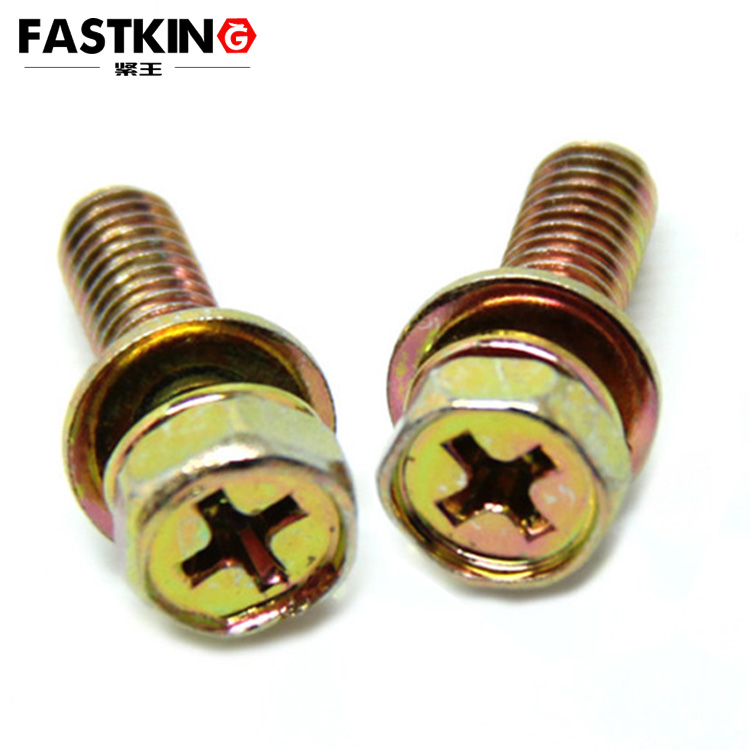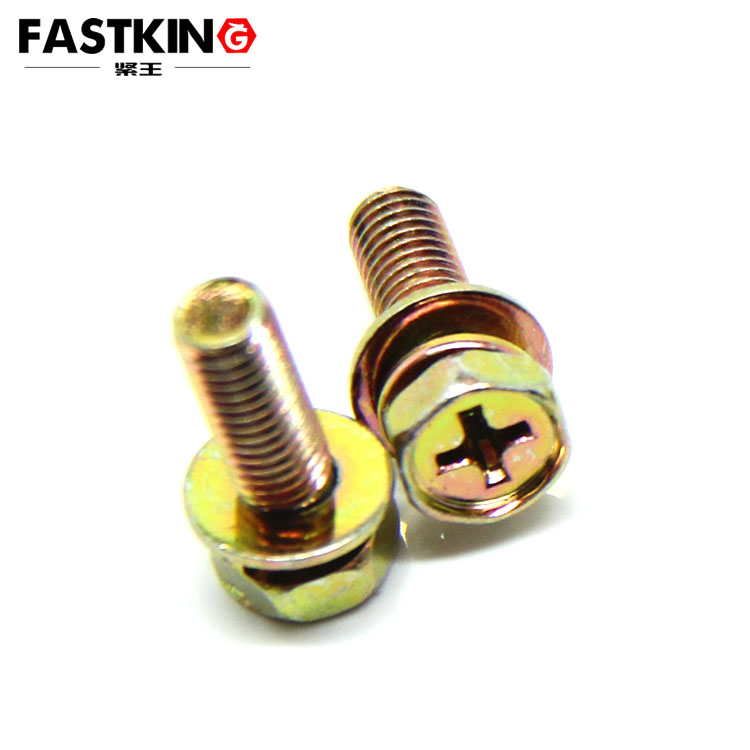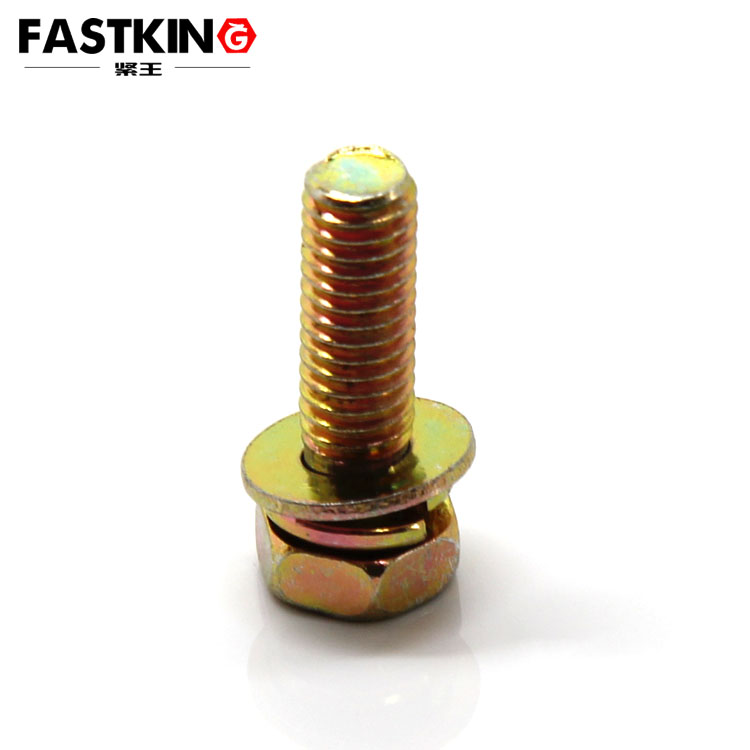In modern industrial production, screws are often overlooked despite being fundamental fasteners. The emergence of hexagonal cross-head recessed three-combination screws marks a significant breakthrough in fastening technology. This innovative design integrates three driving methods—hexagonal, cross-head, and recessed—into one screw, addressing many of the pain points associated with traditional screws and providing a more efficient and reliable solution for modern manufacturing.
I. Technical Features

The hexagonal cross-head recessed three-combination screw features a unique head design that combines hexagonal, cross-head, and recessed driving methods. This design allows the screw to adapt to various installation scenarios, whether using manual or power tools. The screw head is precision-machined to ensure optimal torque transmission for each driving method.
Material selection is crucial for these screws, which are typically made from high-strength alloy steel or stainless steel. These materials undergo heat treatment and surface finishing processes to enhance their mechanical properties and corrosion resistance. The screw threads are formed using precision rolling technology to ensure high accuracy and strength.
Compared to traditional screws, the three-combination design offers significant advantages in versatility and reliability. Single-drive screws often suffer from issues like slipping or stripping during use, but the three-combination design effectively eliminates these problems, significantly improving installation efficiency and connection reliability.

II. Usage Methods
When selecting tools for installation, it is recommended to use professional tools that match the screw size. For hexagonal drives, use hex keys or socket wrenches; for cross-head drives, select the appropriate size of cross-head screwdriver; and for recessed drives, use specialized recessed bit tips. The correct tool choice not only enhances installation efficiency but also prevents damage to the screw head.
The installation process should follow standardized steps: First, clean the connection area to remove any impurities. Align the screw with the hole and begin pre-tightening using the chosen driving method. Finally, use a torque wrench to tighten the screw to the specified torque value. Throughout the process, ensure that the tool is perpendicular to the screw head to avoid slipping.
III. Application Scenarios
Automotive Manufacturing
In the automotive industry, these screws are widely used for connecting critical components in engines, chassis, and body parts. Their reliable fastening performance and convenient installation method significantly improve assembly efficiency and quality. They are especially indispensable in fixing battery packs in new energy vehicles.
Mechanical Equipment Assembly

For heavy machinery, the high strength and reliability of three-combination screws make them the preferred choice for connecting large equipment components. They are particularly useful in parts that require frequent disassembly and maintenance, as their multiple driving methods offer great convenience for on-site repairs.
Electronics and Electrical Appliances
In the electronics sector, the precision and reliability of these screws meet the high standards required for electronic components. They are used in household appliances, ensuring both aesthetic appearance and reliable connection strength.
IV. Conclusion
The hexagonal cross-head recessed three-combination screw represents a significant advancement in fastening technology. It not only addresses the common issues associated with traditional screws but also provides a more efficient and reliable solution for modern manufacturing. As manufacturing technology continues to evolve, these multi-functional screws are expected to play an increasingly important role in various industries, driving the entire manufacturing sector towards greater efficiency and reliability.
